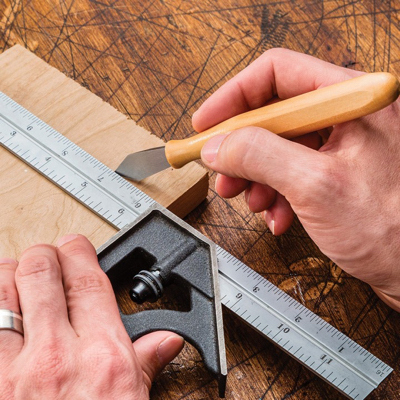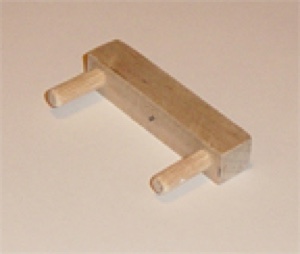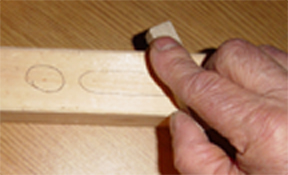
"Helping woodworkers online for over 20 years"
Marking Tools 101
Traditional Marking tools
Any of us that have done home repairs have probably started out with a carpenter's pencil in our tool pouch and eventually find we left it somewhere so we just use a nail to scribe a cut line. Carpenter's Pencil A carpenter's pencil is actually quite versatile, a lead sharpened to a taper will draw a fine line when used in the thin orientation and a bold line when used in the wide direction. A notch cut in the center of the lead with a file will allow you to draw two parallel lines when needed. The flat shape prevents them from rolling away and makes it easier to hold than a round pencil. They have a stronger lead so tend not to break as easily on irregular surfaces. Their use is primarily in the construction trade where exact cuts are not as critical as in fine woodworking. Do to their shape they can't be sharpened with a typical pencil sharpener so are best sharpened by hand with a utility knife. Hold the pencil cupped in one hand, point away from you gripping it with thumb and index finger. Push the knife away from you with the thumb of the hand that is gripping the knife shaving the wood away. Ordinary round pencils work quite well in the home workshop, they don't have to be strong enough to survive the rigors of being carried in a tool pouch. Most of us will have several stached around the shop and a pencil sharpener mounted on the wall to maintain a sharp point. Some prefer using a mechanical pencil with a fine .5mm lead so they don't have to be continually sharpening the pencil lead. Some types of ball point pens work well, another alternative is an ultra fine point Sharpie. Marking Knives For a very fine line nothing beats a knife blade, there are dedicated marking knives or you can use an Exacto knife. Knives work best across or on the bias of the wood grain, use caution marking with the grain as the point will tend to follow the grain in some species of wood. Awls
There are several types
of awls available, for marking a scratch awl is preferrable, it can be
used to scribe a line or to mark a point such as where to drill a hole.
This type of awl will have a needle point that allows for precise
placement of the tip. Many prefer to use a scratch awl rather than a
marking knife when scribing with the grain. Center Gauge
A simple jig can be made to mark the center of a board, instructions are here.
|



